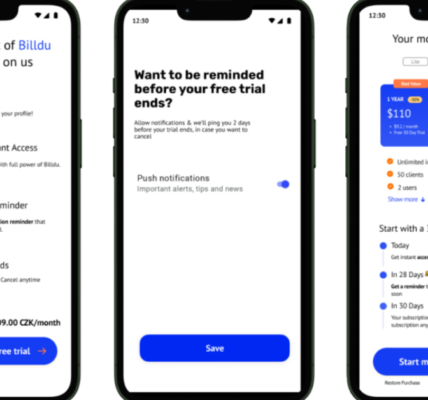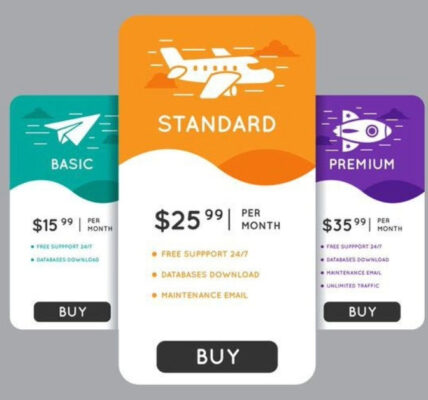Churn is the biggest threat to any subscription-based indie app. You work hard to acquire new users, but if they cancel their subscriptions faster than you can replace them, your revenue stalls—or worse, declines.
The problem? Most developers only react to churn after it happens, rather than predicting and preventing it in advance. That’s where subscription analytics comes in.
By analyzing user segments and identifying behavioral patterns, you can spot early warning signs of churn, take proactive steps to retain subscribers, and ultimately build a more profitable, sustainable business.
This guide will break down how to use subscription analytics to:
- Identify high-risk churn segments.
- Predict and prevent cancellations before they happen.
- Improve retention through data-driven strategies.
Why Understanding User Segments Matters
Not all users behave the same way. Some engage daily and become long-term subscribers, while others cancel within days of signing up. By segmenting your audience, you can tailor retention efforts based on user behavior rather than taking a one-size-fits-all approach.
User segmentation allows you to:
- Identify your most valuable subscribers – Focus on retaining high-LTV users.
- Spot at-risk users early – Address churn risks before users cancel.
- Personalize engagement strategies – Different users need different retention tactics.
Subscription analytics helps you break down user data into meaningful segments, making it easier to target the right users with the right interventions.
Key User Segments to Track
To effectively reduce churn, you need to identify and analyze different types of subscribers. Here are the most critical user segments to track using subscription analytics:
1. New Subscribers
- Users in their first billing cycle are the most likely to churn.
- Analyzing their early behavior can help you optimize onboarding and increase retention.
- Key metrics to track:
- Activation rate (how many complete the onboarding process)
- Time spent in-app during the first week
- Feature adoption rate
2. Engaged Subscribers
- These are active users who frequently interact with your app.
- Their engagement patterns can provide insights into what keeps users subscribed.
- Key metrics to track:
- Session frequency
- Features used most often
- Interaction with premium content
3. Passive Subscribers
- Users who still pay but rarely use the app are at high risk of cancellation.
- Identifying them early allows you to re-engage them before they churn.
- Key metrics to track:
- Declining session frequency
- Drop in feature usage
- Fewer logins over time
4. At-Risk Users
- These users show signs of disengagement and are likely to cancel soon.
- Predicting their behavior helps you implement targeted retention strategies.
- Key metrics to track:
- Reduced in-app activity
- Negative feedback in customer support interactions
- Failed payment attempts
5. Churned Users
- Understanding why users cancel is key to reducing future churn.
- Tracking churn reasons helps refine retention strategies.
- Key metrics to track:
- Cancellation survey responses
- Time spent in-app before canceling
- Drop-off points in user journey
How to Predict Churn Using Subscription Analytics
Predicting churn requires analyzing behavioral patterns and identifying risk signals before users cancel. Here’s how to use subscription analytics to forecast churn and take action before it happens.
1. Track Early Warning Signals
Churn isn’t random—users typically display warning signs before they cancel. Subscription analytics tools can detect these patterns, helping you intervene before it’s too late.
Common churn predictors include:
- Decrease in usage – If a user goes from daily to weekly logins, they may be losing interest.
- Lower feature engagement – If they stop using key features, they may not see enough value in the app.
- Payment issues – Failed transactions can indicate upcoming churn, especially if users don’t update billing info.
- Support interactions – Frequent complaints or refund requests signal dissatisfaction.
By monitoring these signals, you can automate interventions to retain at-risk users.
2. Use Machine Learning for Churn Prediction
Advanced subscription analytics platforms use AI and machine learning to predict churn based on historical data. These tools analyze patterns and generate churn risk scores for each subscriber.
How AI-powered churn prediction works:
- Collects and analyzes user data from in-app activity, billing history, and support interactions.
- Identifies trends in how past churned users behaved before canceling.
- Assigns risk scores to current users based on similar behaviors.
- Triggers automated retention strategies for high-risk users.
Some top churn prediction tools include:
- Baremetrics – Provides churn forecasting based on subscription data.
- ProfitWell Retain – Uses AI to prevent involuntary churn and recover failed payments.
- Amplitude – Tracks user behavior to predict and reduce churn.
By integrating machine learning into your subscription analytics, you can proactively reduce churn instead of reacting to it.
Strategies to Reduce Churn Based on User Segments
Once you identify at-risk users, the next step is to implement strategies that encourage retention. Here’s how to tailor your approach based on different user segments.
1. Improve Onboarding for New Subscribers
Most churn happens within the first billing cycle. A frictionless onboarding experience increases engagement and retention.
Optimization tactics:
- Guide users toward key features with in-app tutorials.
- Send personalized welcome emails with tips on using the app.
- Offer incentives (e.g., bonus features) for completing onboarding steps.
2. Engage Passive Users Before They Churn
Users who aren’t actively engaging with the app are prime churn candidates. Re-engaging them before they cancel can save subscriptions.
Re-engagement tactics:
- Send personalized reminders via push notifications and email.
- Offer feature highlights based on their past behavior.
- Give discounts or exclusive content to encourage renewed interest.
3. Prevent Involuntary Churn from Payment Failures
A significant percentage of churn is unintentional—caused by expired credit cards or failed payments. Fixing this can dramatically improve retention.
Payment recovery strategies:
- Use automated email reminders when a payment fails.
- Implement smart retry logic to attempt payments at optimal times.
- Allow users to update billing information seamlessly within the app.
4. Offer Targeted Retention Discounts for At-Risk Users
Discounts can be a powerful tool for retaining subscribers, but they should be used strategically.
When to offer discounts:
- If a high-value user is about to cancel, a limited-time discount may convince them to stay.
- For long-term subscribers who rarely use the app, a lower-cost plan can maintain engagement.
- If pricing concerns are a common cancellation reason, experiment with tiered pricing models.
5. Collect and Act on Cancellation Feedback
Every churned user is a learning opportunity. Gathering insights from cancellations can refine your retention strategy.
How to leverage cancellation feedback:
- Add an exit survey asking why users canceled.
- Identify common churn reasons and address them in future updates.
- Offer “pause” options instead of immediate cancellations to retain users who may return later.
Conclusion
Subscription analytics is one of the most powerful tools for reducing churn. By segmenting users, analyzing behavioral patterns, and predicting cancellations before they happen, you can:
- Improve onboarding to reduce early churn.
- Re-engage passive users before they cancel.
- Automate payment recovery to prevent involuntary churn.
- Offer targeted incentives to retain at-risk subscribers.
Instead of waiting for users to leave, use data-driven insights to keep them engaged and subscribed. The more you understand why users churn, the better you can prevent it—and the stronger your indie app’s revenue will be.




